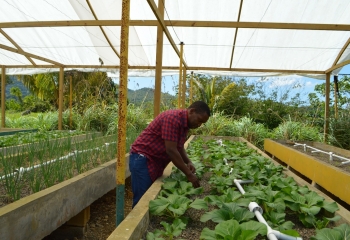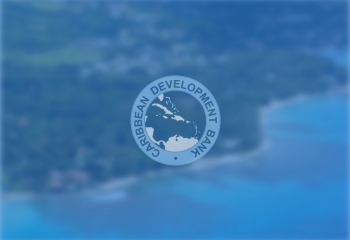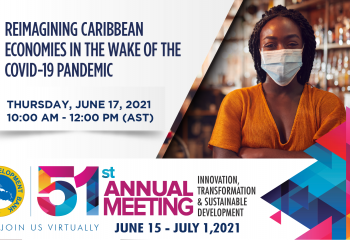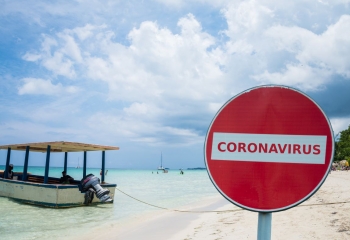Scaling Investments through Public-Private Partnerships, Development Finance Institutions and Strategic Partnerships

Good morning, distinguished colleagues, esteemed partners, and friends.
It is a privilege to address this year’s African Investment Forum (AIF) —an event that has become a global reference point for innovation, transformative ambition, and decisive action. The theme, “Bridging the Gap: Mobilising Private Capital to Unlock Africa’s Full Potential,” speaks directly to a challenge and a unique opportunity that defines both our Regions and, increasingly shapes/impacts, our shared future. It is a challenge the Caribbean confronts daily- the imperative to move from ambition to implementation by mobilising private capital at scale in markets that are small, vulnerable, and in need of transformative investment.
Africa and the Caribbean share more than historical ties. We share the same development urgency, the same aspirations for resilient, inclusive growth, and many of the same structural constraints—narrow fiscal space, exposure to exogenous shocks, and sizeable infrastructure gaps that persist even where political will is strong. Public resources alone cannot close these gaps. Across both our Regions, the solution is evident: we must urgently mobilise substantial private capital more than we have ever done before.
This is why Public-Private Partnerships (PPPs), Development Finance Institutions (DFIs), and strategic partnerships matter. They are essential mechanisms for shifting development trajectories in emerging economies. When fully optimised, they convert constraints into opportunities, and transform markets long viewed as “high risk” into not only viable but dare I say lucrative, innovative and extremely investable spaces.
The Bank’s wide array of projects in the Caribbean offer practical examples of what is possible when vision, commitment, and flexible/enabling financing structures converge. Dominica’s pioneering geothermal project stands as one such example. This project, positioned to deliver clean, reliable, and affordable baseload energy, began as a concept that many commercial players viewed as too risky. Yet, through strong public leadership, carefully structured risk allocation, concessional finance, and private-sector operational expertise, it is now charting the way forward for renewable energy transformation in vulnerable small island states. Its greatest value lies not only in its climate and economic benefits, but in the demonstrative effect it creates: that when risks are well understood, mitigated, and shared, capital will flow—even in frontier markets.
This philosophy of consistent engagement also guides the Caribbean Development Bank’s strategic partnerships. As examples, our collaboration with the Green Climate Fund enables us to mobilise climate-resilient infrastructure investment across multiple islands—effectively multiplying the scale of what national budgets could achieve alone. While the Caribbean Catastrophe Risk Insurance Facility is another pioneering solution to our peculiar regional issues. It is a globally recognised model for pooling risk and providing rapid liquidity after disasters. It is proof that when governments, DFIs, and private partners align, systemic vulnerabilities can be managed collectively.
Co-financing with the Inter-American Development Bank, the World Bank, and other partner DFIs has enabled the Caribbean to pursue transformational projects in energy, transport, and social infrastructure. But these partnerships are more than financing instruments—they are platforms for innovation, for knowledge exchange, and for strengthening institutional capacity. Just as importantly, they enhance our ability to engage the private sector and attract capital investment. By aligning standards, sharing due diligence, and demonstrating unified DFI commitment, these partnerships reduce perceived risk and help create the confidence investors need to enter small or frontier markets. In this way, co-financing becomes a catalyst—not only for delivering projects, but for crowding in private capital and scaling impact far beyond what any single institution could achieve alone.
This is precisely where DFIs add their greatest value. Our work extends beyond financing individual projects. We help shape the investment environment itself—improving regulatory frameworks, supporting procurement reform, strengthening public-private partnerships units, and building capacity for project preparation and execution. DFIs take early-stage risks that private partners often cannot. We deploy catalytic capital where it is most needed. And through our credibility and technical rigour, we give confidence to investors who are looking for long-term, stable, risk-managed opportunities.
In many ways, DFIs function as market architects. When we help a government prepare a pipeline, structure a concession, or design a blended finance mechanism, we are not simply facilitating a single project—we are improving the environment for all future investments. This is how ecosystems take shape. And ecosystems, not isolated transactions, are what ultimately unlock scale. The Bank’s business is enabling and supporting these ecosystems now moreso than ever.
Africa’s financing needs underscore the urgency of this work. Current estimates suggest the continent requires over USD170 billion annually in infrastructure investment. Yet less than half of this is mobilised today. Tightening fiscal space and heightened debt vulnerabilities compound the challenge. But they also present a historic opportunity. There is a rising global pool of private capital actively seeking investments that generate both financial return and sustainable development impact. The question is not whether capital exists—it is whether we can create the conditions to attract it.
Platforms like AIF offer an unparalleled opportunity to do just that. By convening governments, institutional investors, DFIs, and project developers, the AIF creates a shared space for alignment, partnership, and action. This is the type of coordination mechanism that both Africa and the Caribbean must leverage if we are to close the investment gap at scale.
Blended finance is one of the most powerful tools available to us in this effort. When used strategically—and with discipline—it allows us to crowd in private capital for projects that would otherwise never materialise. The goal is not to subsidise indefinitely or distort markets, but to create proven, scalable models that investors trust and that governments can replicate. Whether in renewable energy, resilient infrastructure, digital connectivity, or climate adaptation, blended finance can accelerate sectors that are essential for long-term competitiveness and economic transformation.
There is tremendous scope for deeper Africa–Caribbean collaboration in blended finance, PPP structuring, and project preparation. Small island states have deep experience in climate resilience, risk mitigation, and adaptation investment—areas that are increasingly relevant across the African continent. Africa, in turn, offers scale, innovation, and financial depth that can benefit Caribbean markets. The Caribbean Development Bank recognises the enormous potential in expanding cooperation with the African Development Bank, the Africa50 infrastructure platform, and of course the AIF. Together, we can codify shared lessons, co-design financial solutions, and mobilise investment that neither Region could unlock on its own.
As we look ahead, one principle must remain central: capital is a means, not an end. Infrastructure becomes development only when it improves lives—making societies more dynamic, more inclusive, and more resilient. Well-structured partnerships deliver more than assets—they deliver confidence. They create jobs, improve service delivery, accelerate digitalisation, strengthen climate resilience, and drive growth that reaches communities.
The opportunity before us is immense. But capturing it requires leadership that is bold, imaginative and collaborative. Governments must continue to strengthen policy frameworks and institutional capacity. DFIs must take smart risks, innovate in structuring, and remain patient partners. Private investors must engage with a long-term view, recognising that frontier markets can deliver both impact and return when properly structured.
If we align these strengths—if we scale what works, replicate proven models, and double down on coordination—then bridging the investment gap becomes not an aspiration, but an achievable outcome.
Africa and the Caribbean stand at a similar crossroads. Our challenges may be significant, but together our potential is far greater. With partnership, discipline, and ambition, we can unlock capital at scale and deliver development that endures.
Thank you.





